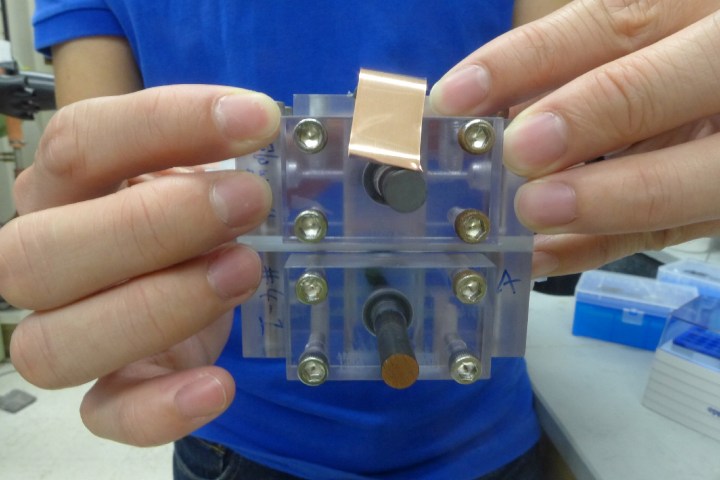
At present, solar cells have not been developed at a scale relative to our total energy requirements. Although engineers are building ever cheaper and more efficient solar panels for lapping up the sun’s rays, one major bottleneck is the inability to store this energy for times when the sun’s not shining down on us.
A new proof-of-concept device created by researchers at the University of Wisconsin-Madison in Wisconsin, and King Abdullah University of Science and Technology in Saudi Arabia may help change that, however. They’ve combined a solar cell with a large capacity liquid battery that skips the electricity-making process in favor of transferring the harvested solar energy directly to the battery’s electrolyte.

“We wanted to create a technology that not only harvests the solar energy but also stores it in the form of electricity, so it can be used on demand,” Song Jin, a professor of chemistry at the University of Wisconsin-Madison, told Digital Trends. “Everyone’s familiar with a solar cell, which converts solar energy to electricity. But the problem with them is that, of course, the sun goes down every night and we don’t just want to use electricity when the sun is up.”
Discharging the battery to supply electricity at night, or on rainy days, is then a matter of connecting a load to a different set of electrodes, before passing the charged electrolyte through the device and letting the electricity flow out.
Before people get too excited, though, Jin said that the research still represents a work in progress.
“This is still an early prototype,” he said. “We’ve got a workable device, which we’ve shown can be charged without wasting too much energy in its cycles, but it only has a solar conversion efficiency level of about 1.7 percent. That’s compared to current commercial solar cells, which can be around 15-20 percent. Clearly we’re not at the level of being practically competitive yet, but as we point out in the paper we’ve got a lot of ideas for obvious directions we can take the research to improve the solar conversion efficiency, as well as the energy storage density.”


